UPDATED REVIEW -Nov 1, 2023 | Williams Symphony Grand ll Digital Grand Piano | $2499 regular internet selling price (and sometimes less money than that when “on sale.)” | The Williams model Symphony Grand II (aks: Symphony Grand 2) digital mini grand piano (it’s a nice name isn’t it?:) is the latest in a line of Williams digital pianos and the 2nd digital baby grand they offer in their line. Just so you know, the previous and current smaller and less expensive model “Symphony” micro grand versions are definitely not good with regard to their piano playing realism in my opinion and I have never liked them for that reason alone. I just wanted to mention that at the outset.
So I just wanted to set the stage for you with regard to what I am about to say next because I don’t work for any store or digital piano manufacturer and they don’t pay me to do reviews. I am an independent long-time piano teacher, pro musician, consultant to piano teachers, music studios, churches, and families all over the US and the world for well over 40 years. I know what real acoustic pianos are supposed to do and what digital pianos likewise should be doing to provide a realistic piano playing experience. As hopeful as I was for this Williams Symphony ll mini digital grand to be the 1st Williams piano that I actually liked for its piano playing ability, unfortunately I would not own it and am disappointed this model does not live up to all the marketing hype about it, based on my playing experience with it.
Let’s first talk about the key action in the Symphony Grand ll. The Williams key action is said to be a “Fatar” manufactured key action. The Fatar company of Italy is well known in the digital piano circles for manufacturing a variety of key actions for a variety of digital piano companies who cannot make or don’t want to make their own key actions for their digital pianos. Like other companies who manufacture products, the Fatar company does not manufacture just one model of key action…it makes many different models for different applications and some of those key actions cost quite a bit more money than others. So when you hear that word “Fatar,” you’ll need to to put it in context with how good, or not so good it really is when it comes to reproducing a piano-like key action movement and response.
The Fatar company calls this Williams Symphony Grand ll key action their “GrandTouch” keyboard action. However, the Fatar company makes many different key actions under that logo (Grandtouch) and those key actions vary quite a bit in quality and realism. Of course this name is supposed to impress you by trying to make you think that this keyboard actually feels like a grand piano…but nothing could be further from the truth and it does not come close to that claim or statement. I have played thousands of grand pianos over my career and this Williams model does not have a “grand touch.” The keys are lighter to press down which is fine, but those keys are noisy & thumpy when they are moving, and the key touch-weight (how much force it takes for the fingers to press down the keys) on the fronts of the keys as compared to the backs of the keys is uneven and not the same.
The action is not “bad” as far as the overall key weight and overall movement, so I think many people will be OK with that, although I would not. But when the keys move they are somewhat thumpy when the keys go down, and those keys are very noisy when the keys come back up and make a noticeable clunky knocking sound, kind of like knocking on wood although there is no wood there. I could easily hear that knocking sound over the music when playing it, especially when playing at lower volumes and not blasting it out. Overall, at least for me, that key noise was pretty distracting and after awhile it would start to bother me and get in the way of my enjoyment in playing the piano.
Just because a piano has 88 black & white keys does not automatically make the key action a good one. In this case I would give the Williams Symphony Grand ll a grade of C+ for its key action and no more than that. If it wasn’t for how noisy it is when the keys are moving up & down (especially in a quieter room), I would have given it a slightly higher grade. The other thing about this key action is that I don’t know how long it will last without having problems because this is a new model for Williams. The key actions on $500 Yamaha and Casio portable digital pianos are better than this one based on all my experience with those models. So don’t let all the Williams piano company hype fool you. I was hoping this key action movement and playing experience would be better, but unfortunately it is not acceptable as far as I am concerned. Maybe it would be for you, but definitely not for me and I don’t think I am asking too much.
Now I want to discuss the acoustic piano sound in the Symphony II. If you listen to the piano sound demos on the Williams web site you will find those demo songs sound really good overall. If I was just listening to them through those on-line demos I would probably buy this model right then and there…those demos were very convincing in terms of the piano sound. But unfortunately that’s not what I experienced when I actually played the Symphony II for myself going through its on-board internal speakers. Williams makes a big deal about using “6 velocity layers” in their stereo grand piano sample. That may be true as far as having 6 sampled layers, but what you don’t realize is that when you have many layers of piano sound, one on top of the other, the transition between those different layers needs to be done smoothly and without gaps so that you don’t notice it going from one layer to the next with big noticeable jumps in volume and/or tone as you are pressing down the keys.
What I mean when I say “layers” is that there are separate recordings done of a piano sound being played at different velocities on a real piano. There is the quieter, more mellow tone when playing lightly and then they transition up 5 more piano sound layers (as you play harder and harder) to a more powerful sound that comes out much brighter and more metallic as you play very hard on the keys. On a real piano there are many (much more than 6) tonal/expressive changes that would occur when playing from soft to loud.
With regard to the Williams Symphony Grand ll piano sound, it definitely has noticeable issues in that way and and it’s more obvious when listening through headphones because you can hear everything more clearly. The layers of piano tone when playing just one note/key were very jumpy with noticeable gaps as you played softly to very hard. In other words, it was like having 6 separate piano sounds in one key while playing at different velocities. It was even more noticeable as far as the gaps occurring when I turned up the master volume to make the overall volume of the piano louder. At that point the jumpiness of the piano sound velocity layers was even more evident. In other words, the piano tonal dynamics were expressive but at the same time they were very jumpy in volume and tone without smooth transitions.
For me this is a really big problem because it makes the piano sound artificial especially when playing one or two notes at a time. You can somewhat cover up the deficiencies by playing lots of notes or chords at one time and then you may not be able to discern this issue as easily. But if you don’t do that and play note to note or just a couple of notes at a time and you press on the keys lightly and then a bit harder, you’ll notice some jumpiness and rough transitions in those “velocity layers” that Williams talks so much about in their marketing and specifications.
I also found another but different piano sound issue when playing notes in the higher octaves starting at about the G key above middle G. It sounds like there is a completely different issue with no tonal dynamics or velocity layers at all on those notes. In other words, when you are playing the keys in those higher octaves, the piano sound on each key has little to no variation in tone or much variation in volume. It’s like the digital piano sound technology doesn’t work at all up there…it’s the same tone and the just about same volume on each key no matter how hard or soft you play the keys.
If you don’t know much about real pianos or have not played them before, then you may not know what you are missing in this way when playing the Williams Symphony Grand ll. But one thing is for sure, the Symphony Grand II does not digital reproduce these piano tones like the top name brands do. There is a cost for making the piano sound “more realistic” and that cost would have to passed along to the consumer and whether the Williams company (whoever actually makes the pianos for them in China) has the technology to do all of that is doubtful. It is obvious that to keep the cost of this piano down, Williams decided that they did not want to go further with making the piano more realistic and that’s one of the reasons why this model is $2499 as opposed to being closer to or over $5000 like in the top name brands. Always remember…you get what you pay for so you must “never judge a book by its cover” because just because it looks good does not mean it comes anywhere close to the competition out there.
Are all these things something that the average person can “live with?” Maybe…it just depends who you are and what you expect. But for anyone who plays at intermediate level and above, especially advanced piano players, if they were to say that the Williams Symphony ll sounds and plays like a real grand piano and that there are no issues after they play it…then either they don’t know what they are talking about or maybe they are getting paid by the Williams company to only say “nice things” about the piano. The piano sound sample themselves are actually good overall as I mentioned before, but it’s the transitions in the velocity layers of those piano sounds as you increase or decrease finger force that are so out of whack and so noticeable that it takes away from the playing experience, at least it did for me unfortunately, especially if you are mainly getting this instrument for piano playing and not mainly for all the bells & whistles that it has…which I will get to later.
When it comes to the pedals and how they should work, the Symphony Grand ll does have all 3 pedals including sustain, sostenuto, and soft pedal. However, 90% + of all the piano out there who own and play these types digital pianos only use the right side sustain pedal to hold/sustain the notes. The sustain pedals on digital pianos can either have the cheaper on/off switch or it can trigger a half-damper effect which allows the sustained sound to have a variable amount of sustain time rather than just all the way on or all the way off. Even many of the lower price portable and cabinet digital pianos under $1000 have the better, more natural “half-damper” variable sustain. However, on the Symphony 2 the pedal sustain is unfortunately just on or off and no in-between. It does not give a variable amount of sustain when pressing down the pedal.
Also, with regard to the sustained tone when holding down the sustain pedal, it is important to have a lot of noticeable sustain time (aka: decay time and volume duration). In other words, when holding down the sustain pedal, the time it takes for the sustained tone to fade away or decay should be a noticeably longer time like on a real acoustic piano and you should also be able to hear it on all of the notes played.
Also, as Williams claims (and this is getting a bit more “techy”), the sustained note itself does not seem to show off the normal sample loops that you might find on other digital pianos which makes the piano sustained tone more linear and more natural in that way, and that is a good thing. However, even with that being said, if you want a more natural acoustic type pedal sustain playing experience, you won’t be getting much of that on the Williams Symphony Grand ll. Again, that’s why other digital grand pianos from Yamaha, Roland, and Kawai cost considerably more money, because to make it better and more authentic, you will be paying more for it. Two of the pedals in this model can also be programmed to trigger other things in the piano such as drum fills and drum start and stop.
One of the next things in a digital piano when it comes to experiencing a satisfying piano playing experience is the internal speaker system, and this is even more true for a digital mini grand piano. You definitely want the piano sound to be natural and full with good frequency range in a mini grand piano so that it will sound as good as it looks. Williams says they have a 100 watt 8-speaker internal sound system in the Symphony ll which would seem to be really good as far as the specification goes. But when I played this piano multiple times I found the speaker system to be somewhat “mid-rangey” in frequency which made the piano sound a bit thin, muddy, and artificial to me when playing the piano sound, especially in the middle octaves. In other words, it did not sound like a grand piano with big bold and clear tone.
The volume of the music in the Symphony Grand ll speaker system certainly gets loud enough so that is definitely good. It’s just the realism coming out of those speakers and amps that is lacking for me. The two front firing speakers built into the control panel on either side of it did project sound but the volume and clarity of that sound was not great in my opinion, and for me the front speakers did not add to the listening experience. Since I do play and have played literally hundreds of real grand pianos then I have that experience in knowing how good a real piano can sound when playing it, and the Symphony II does not have that in my opinion. Actually the stereo piano sound and the other instruments in the piano sound much better when using a good pair of stereo headphones and listening to it that way.
The Symphony Grand Grand ll control panel is laid out well and fairly easy to navigate. The 4.3″ color touch screen looks pretty cool although it is not a touch-screen so you must use the buttons. I like the bigger square and smaller rectangular buttons to access the functions, but those buttons are not “soft-touch” buttons and are firm to the touch. They also make a loud click noise when you press them. I get that this tells you when you have pushed it but it’s more distracting to me than useful. I’d rather have the better feeling soft-touch buttons and without the loud click when pressing them. The 4 small volume control knobs and the left side of the panel feel good to turn and are definitely useful to control various volume on the piano such as master speaker volume, headphone volume, input volume, and accompaniment volume. They all seemed to work well and gave control over those 4 aspects of the piano. The color touch screen
The digital features in this piano are plentiful and most of them can be useful and a lot of fun. There are 172 instrument sounds that are divided up into instrument categories such as piano, keys, organ, strings/winds, bass/guitar, and drums. Some of the instrument sounds such as electric pianos, jazz organs, violins, trumpets, etc are good while other instrument sounds are just mediocre. But that’s true for some other digital pianos in this price range as well. The point is that there is a good variety of instrument sounds and they can be fun to play. The Symphony Grand ll also has 180 interactive accompaniment backing tracks (styles) including rock, pop, jazz, and traditional. The
styles work when you play any chord on the left hand and then you will get a “one-man-band” experience with all the accompaniment playing for the left hand while you pick an instrument sound for the right hand and play the right hand melody along with the accompaniment style on the left hand.
The styles and instrument sounds are fairly easy to access from the user display screen. There are buttons on the control panel to change the sound and style categories, the pages, and also a knob to quickly move from one selection to another. The color display screen is easy to read and displays enough info in to navigate through the accompaniment styles and instrument sounds fairly easily once you have gone through the operating system a few times. The accompaniment system also has a start/stop button, intro & ending, drum fills, and fade out. So there is a lot you can do with the accompaniment styles on this model to vary the experience so it
doesn’t always sound the same. In fact when you play chords on the left hand you can also get 1-finger harmony chords on the right hand so that one note on the right hand becomes 3 notes of sound when you select the “harmony” function button on the control panel.
A unique feature of the Symphony Grand ll are the multi-color key lights above each key. You can play song files in the piano and those lights will follow all the the notes in the songs so that you can see the key that you are supposed to play. Those lights will follow the tempo of the song and go slower or faster depending on how fast you play the song file. These lights that are embedded into the piano above each key and are colorful and bright and give you quite a light show.
The Symphony Grand ll is also capable of playing multi-track General MIDI song files from a USB flashdrive which is pretty cool. Many pianos in this price range cannot do that and I have always liked to used a variety of General MIDI song files for learning to play some popular songs. It’s definitely not the best GM song player I have ever heard because some of the instrument sounds in those files sound fake and the instrument sounds come directly from the Williams Symphony II. But overall I thought it was pretty good and could be useful while being enjoyable to hear. The MIDI song files from a USB flashdrive were fairly easy to find in the user display screen and navigating through those files was fairly intuitive. Also, the lights above the keys move to those General MIDI songs and the lights follow the notes being played in those song files.
There are a number of standard functions in this model that most digital pianos have. This would include the ability to layer (mix) two instrument sounds together at one time, split two instruments with one being on the left hand and the other one on the right hand, a duet set-up so that two people can play the same notes at the same time by electronically splitting the 88 keys into 2 44-note sections, a transpose feature that allows you to change the key you’re playing in from one to the next by using the transpose button and changing the key in the display screen to whatever you want it to be. You also have a digital metronome for timing so that you can set it to whatever time signature you want and then set the tempo to hear the sound of the metronome to help you stay on the beat. All digital pianos that I know of out there have these more common features.
The Symphony Grand ll piano also has some functions and features that you don’t always find on digital pianos in this price range under $2500. These features would include having user registrations so that you can save your personal setups and sound/style combinations into memory slots to instantly recall at a later time without having to make your custom setups every time you played the piano. They would just be stored in the piano until you need them which is very convenient. The piano also has 5 different pages of settings which you can access through the color display screen using the buttons directly below the screen to change pages. There are a number of things you can do to alter your setups like change EQ, change volume settings on the instrument sound layers, splits, and so on.
When it comes to recording songs and playing them back, the Symphony Grand ll has a very robust system including 4-track MIDI recording and 1-track audio wav file recording. With the MIDI recording you can record up to 3 instrumental tracks and play them back independently or simultaneously for writing music, recording your practice pieces, or just having fun. The 4th MIDI recording track is to be used only with the accompaniment styles so that you can record your one-man-band accompaniments on that track and your regular melody/harmony lines on the other 3 tracks. Audio wav file recording is useful because it records the actual sound of your playing and that audio file can be played back on a computer and sound the same. MIDI recordings have more flexibility in terms of tempo control, etc, but MIDI is typically most useful directly on the digital piano if you want to hear those sounds whereas those sounds will be much different if those song files are played on another device.
The Symphony Grand ll also has Bluetooth wireless connectivity which is becoming more common these days on digital pianos, but there are still some without it. So what does Bluetooth do for digital pianos? With regard to the Symphony II, there is Bluetooth audio and Bluetooth MIDI. The audio portion allows you to stream music from your external device (tablet, phone, computer) directly into the speaker system of the digital piano so that you can use that speaker system for playing and hearing music from your external device music library, YouTube videos, etc. Bluetooth MIDI is useful when wanting to connect you external device to the digital piano without having to use a physical cable to do so.
In addition to Bluetooth wireless connectivity this model also has 2 headphone jack inputs, USB connection port to external device, USB flashdrive input, standard MIDI connectors, 1/4″ line outputs, and a stereo line input. So with regard to physical connectivity to other devices both input and output, this model also does a good job and it is lacking nothing in that area. These types of connectors can be useful depending on if or how you want to connect this model to other devices such as external speakers, computers, etc. So I was happy to see this in the Symphony II. The USB to Host output and the audio input connectors are located right behind the music rack of the piano so they can be conveniently plugged into a tablet (iPad, etc) along with audio input from an external device if that device has an audio output and then you can hear that device through the piano speaker system.
The Symphony Grand ll cabinet is attractive in its nearly 3’2″ (in depth) polished ebony case although it will soon be offered in polished white and polished mahogany for the same $2299 price including a small matching bench. The piano cabinet has 3 independent legs, a triple pedal lyre, and a 2-position lid for full and 1/2 position which is nice. The interior color of the inside area is a type of orange-brown shade with simulated woodgrain. Although it is an attractive color, that is not what real grand pianos look like on their exposed inside soundboard area. Even though the interior of the Symphony II cabinet is not an actual soundboard, a more natural wood color is what grand pianos mostly have inside so in that way the cabinet interior color is
not realistic. But this is not a real acoustic piano so that might not matter to you. Also in that interior space, the speaker system has a lighter color grill over it to conceal the speakers which is a nice touch. Nevertheless, the positioning of those speakers and the type of speakers used in this model doesn’t put out the clarity of a real piano sound that I had mentioned earlier so I was not impressed in that way.
But now we have to put all those “bells & whistles” aside and the way the cabinet looks and talk about the reality of this piano. There is one big thing that bothers me about the Williams Symphony II and what Guitar Center (the owner of the Williams brand and the other affiliate stores selling this product) says about this piano in their marketing hype and ads on line. I will quote them from their webs site: “the result is the natural sound of a concert grand piano.” Here’s another example on their web site of hype: “The feel of a Concert Grand – a great feeling keyboard that responds to any dynamic performance.” Based on all my playing experience on real concert grands costing well over $100,000 including Steinway, Yamaha, Kawai, Bosendorfer, Fazioli, and others, this Williams Symphony II is as far away from a real Concert Grand as a skateboard is from a Mercedes Benz sports car…it’s not even close.
What you are really getting in this Williams piano in my opinion is a below average “piano playing experience” in terms of the key action, piano sound response, and pedaling, but with a lot of very cool “bells & whistles.” As a comparison, the newer Casio PX-S3000 portable digital piano at $849 is more capable and realistic than the Williams in that way based on all my playing time with them. The piano sound, tonal expression, smooth sound response, accurate key touch, and pedaling with sustain variation half-damper control is noticeably more authentic as compared to the Williams. Also, when it comes to all those extra “bells & whistles” including iPad connectivity, instrument sounds, interactive accompaniments, user interface ability, etc, that Casio I just mentioned is also far superior in many ways, believe it or not.
So what does all of this mean when I make those types comparisons between an $849 portable digital piano and a $2499 digital mini grand piano? It means that “as a piano” the Symphony Grand ll has a lot of shortcomings in its price range and as you progress in your music and piano playing ability or if you already know how to play piano, the Williams Symphony ll can be disappointing as far as a piano playing experience goes based on all the things I previously talked about with regard to key action, piano sound response, and pedaling, and also including the internal speaker system to some degree. As I have said before, perhaps you will not notice these shortcomings in the Williams piano and you’ll be good with it.
The Williams products only have a very small 1-year factory parts & labor warranty. This is by far the smallest warranty in the digital piano industry as far as I know. So why would Williams do that and give it such a small warranty if they are confident in the quality of their products? It’s because there goal is to sell you an extended warranty at the retail store or on-line. Based on my experiences with Williams digital pianos in the past, you definitely do not want to be caught short on the 1-year warranty for a Williams product because if you need it repaired and don’t have good warranty coverage…then you’ll be out of luck real fast.
If you should decide to purchase this Williams Symphony Grand ll digital piano because you think it may be the right “fit” your your needs, then I would encourage you to definitely purchase their 5-year extended warranty which is handled by Asurion warranty company (not Guitar Center/Williams). I would also surmise that any warranty coverage would be subject to getting parts for the digital pianos. When newer models of pianos come out, especially in a micro-digital grand, parts can sometimes be impossible to get for a long while which makes getting a broken digital piano repaired a very big headache. In that case you would need a complete replacement of the piano if that is possible and available. So here’s my advice on that…get ready to purchase the Guitar Center/Musicians Friend, etc, extended 5-year warranty which will cost you an additional and whopping $690 on top of the price of the piano.
When you add the price of the piano at roughly $2500 to the price of the 5-year warranty at approx $700 and then you add sales tax to that amount assuming you are in a sales tax state, then you’ll likely be pushing $3400 for that the Symphony II piano. At that point you are getting much closer to the price of the noticeably better top name brands as far as an authentic piano playing experience goes in an attractive digital mini-grand piano cabinet. It’s my opinion that if you want a long term investment in a digital piano mini-grand and you desire a realistic piano playing experience more than those extra “bells & whistles,” then do yourself a favor and spend more money on
a top name brand that a beginner through advanced pianist will appreciate and grow into.
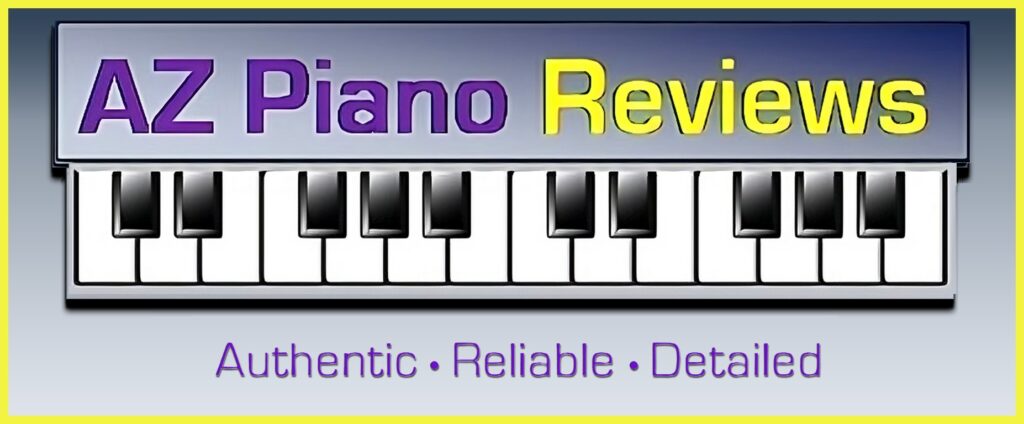













































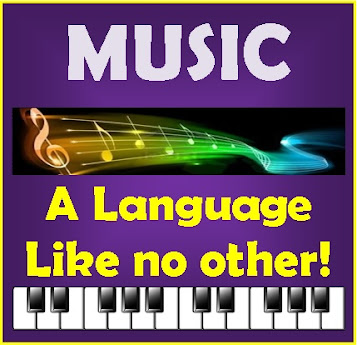

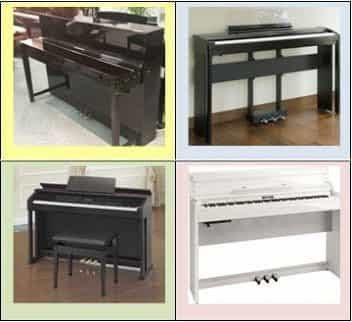


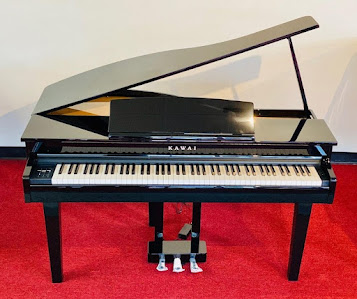
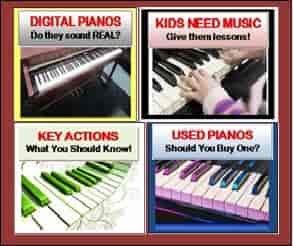
Why does it say you don't work for a store, but later says to email you for pianos at lower prices in big red letters? This seems like a biased review.
DO NOT BUY THIS PIANO. I’ve had it for two months and for the last three weeks have been attempting to get it serviced for, sticking keys. keys with no sound and sticking pedals. I’ve got nothing but run around from Williams /Guitar Center. They are rude children with no manners. I’ve been constantly lied to by people who have no clue what “customer service” means.